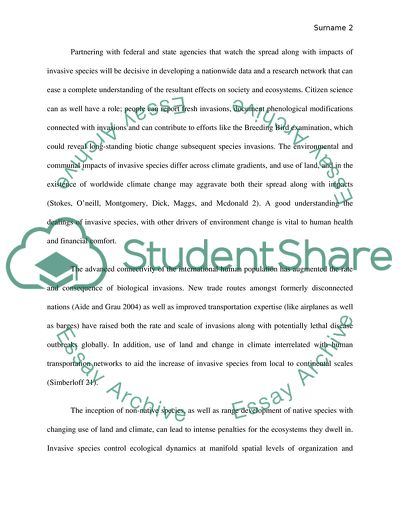Cite this document
(Invasive Species Education Research Paper Example | Topics and Well Written Essays - 1250 words, n.d.)
Invasive Species Education Research Paper Example | Topics and Well Written Essays - 1250 words. https://studentshare.org/environmental-studies/1877251-what-effect-have-humans-had-globally-on-the-spread-of-invasive-species
Invasive Species Education Research Paper Example | Topics and Well Written Essays - 1250 words. https://studentshare.org/environmental-studies/1877251-what-effect-have-humans-had-globally-on-the-spread-of-invasive-species
(Invasive Species Education Research Paper Example | Topics and Well Written Essays - 1250 Words)
Invasive Species Education Research Paper Example | Topics and Well Written Essays - 1250 Words. https://studentshare.org/environmental-studies/1877251-what-effect-have-humans-had-globally-on-the-spread-of-invasive-species.
Invasive Species Education Research Paper Example | Topics and Well Written Essays - 1250 Words. https://studentshare.org/environmental-studies/1877251-what-effect-have-humans-had-globally-on-the-spread-of-invasive-species.
“Invasive Species Education Research Paper Example | Topics and Well Written Essays - 1250 Words”. https://studentshare.org/environmental-studies/1877251-what-effect-have-humans-had-globally-on-the-spread-of-invasive-species.


